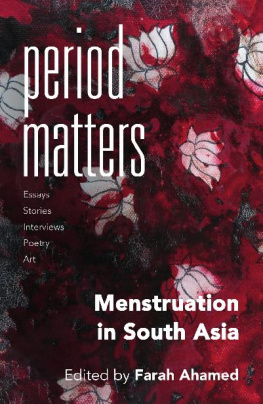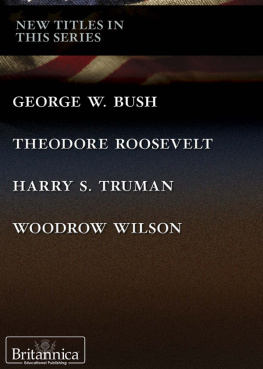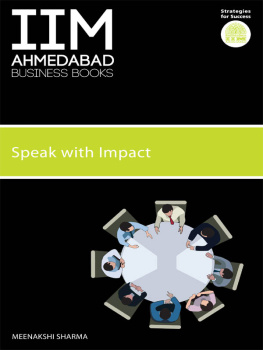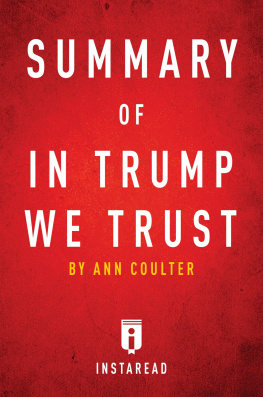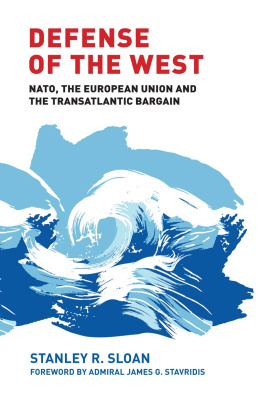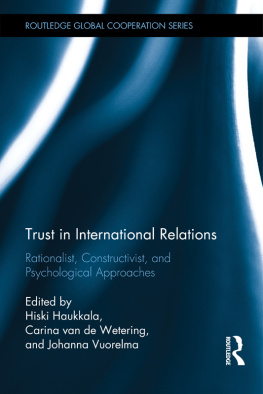Meenakshi Ahamed - A Matter Of Trust: India-US Relations from Truman to Trump
Here you can read online Meenakshi Ahamed - A Matter Of Trust: India-US Relations from Truman to Trump full text of the book (entire story) in english for free. Download pdf and epub, get meaning, cover and reviews about this ebook. year: 2021, publisher: HarperCollins Publishers India, genre: Politics. Description of the work, (preface) as well as reviews are available. Best literature library LitArk.com created for fans of good reading and offers a wide selection of genres:
Romance novel
Science fiction
Adventure
Detective
Science
History
Home and family
Prose
Art
Politics
Computer
Non-fiction
Religion
Business
Children
Humor
Choose a favorite category and find really read worthwhile books. Enjoy immersion in the world of imagination, feel the emotions of the characters or learn something new for yourself, make an fascinating discovery.

- Book:A Matter Of Trust: India-US Relations from Truman to Trump
- Author:
- Publisher:HarperCollins Publishers India
- Genre:
- Year:2021
- Rating:3 / 5
- Favourites:Add to favourites
- Your mark:
- 60
- 1
- 2
- 3
- 4
- 5
A Matter Of Trust: India-US Relations from Truman to Trump: summary, description and annotation
We offer to read an annotation, description, summary or preface (depends on what the author of the book "A Matter Of Trust: India-US Relations from Truman to Trump" wrote himself). If you haven't found the necessary information about the book — write in the comments, we will try to find it.
A Matter Of Trust: India-US Relations from Truman to Trump — read online for free the complete book (whole text) full work
Below is the text of the book, divided by pages. System saving the place of the last page read, allows you to conveniently read the book "A Matter Of Trust: India-US Relations from Truman to Trump" online for free, without having to search again every time where you left off. Put a bookmark, and you can go to the page where you finished reading at any time.
Font size:
Interval:
Bookmark:

For
India & Hayes
Contents

Part One:
19451947
O N THE TWENTY-SECOND OF SEPTEMBER 2019, FIFTY THOUSAND Indian Americans gathered at the NRG stadium in Houston, Texas to welcome the prime minister of India, Narendra Modi. Billed as the Howdy Modi event, it was the largest gathering of supporters ever assembled in the United States for a foreign head of state. The event organizers, the Texas India Forum, a new non-profit entity, announced that not only had all tickets been sold out, there was an additional waitlist of ten thousand. The programme was broadcast to millions of people around the world in Hindi, English and Spanish.
Security was tight. Attendees began patiently lining up as early as 6 a.m. to make their way through the extensive security checks. Although massive rains had caused destructive floods in the days leading up to the event, that morning the sun came out and the weather in Houston was as sultry as ever. People wore everything from casual T-shirts to formal dress befitting an Indian wedding. There was palpable excitement in the air as the crowd eagerly awaited the sharing of the podium by the leaders of the two countries that mattered so much to them. Several US politicians were in the audience, including Republicans Ted Cruz and Pete Olson of Texas, and Democrats Raja Krishnamoorthi of Illinois and House Majority Leader Steny Hoyer.
When Modi arrived, the crowds enthusiasm surged. They chanted his name, drowning out the entertainment. President Trump, the guest of honour, arrived late after stopping for a briefing on the recent floods. Modi greeted Trump outside and, holding his hand, brought him into the stadium. This was Modis show, and he exuded confidence as he welcomed Trump to the stage. As they stood side by side, looking out at the stadium full of Indian Americans waving both the Indian and American flags and chanting their names, one could not help noticing that the shouts for Modi far exceeded those for Trump. Both leaders gave speeches dutifully affirming their friendship. Modis was long, but Trump, to his credit, remained standing and nodded respectfully through it all.
Modis popularity with the Indian diaspora was on dramatic display at the Howdy Modi event. He used the occasion to rally support for Trump with a slogan Ab ki baar, Trump sarkar (This time, its Trump time). He asked the crowdhis family he called themto join him in giving Trump a hand for combating terrorism and for being a friend to India. The crowd responded with cheers. He was trying to convey to Trump that he had the power to deliver Indian American votes. It was a bold message by an Indian prime minister on American soil.
The scene in 2019 Houston was a far cry from the reception Indias first prime minister, Jawaharlal Nehru, received on his maiden visit to the US in 1949. The Indian American community was small and politically insignificant at that time. India was a poor country attempting to stand on its feet after years of colonial neglect. Badly in need of aid, India hoped the worlds most powerful democracy would help, but it was viewed with indifference by the Truman administration.
Nehru, refined, erudite and respected by many world leaders for having helped win Indian independence, felt it was beneath him to beg for aid. He expected the US, with its wealth and its history of fighting colonialism, to step forward to help India. President Truman, convinced Nehru was a communist because he had chosen to remain non-aligned, mistrusted him. Meanwhile Dean Acheson, the legendary US secretary of state, a staunch cold warrior, treated him with condescension.
Nehrus daughter, Indira Gandhi, accompanied him on the trip and had her own unpleasant encounter with John Snyder, Harry Trumans treasury secretary and personal friend. Snyder arrived somewhat inebriated at a dinner in Washington, DC given by Dean Acheson in Nehrus honour and proceeded to harangue guests about foreigners trying to extract money from the US. It was an inauspicious start to their relationship.
When India became the worlds newest and largest democracy in 1947, relations between it and the US, the worlds most powerful democracy, should, by all accounts, have been friendly. Neither country had expansionist geopolitical ambitions of its own and both believed in self-determination as the bedrock principle of government.
As Nehru himself so eloquently said when he addressed Congress during his visit to the US capital on 13 October 1949:
The voices of India and the United States may appear to differ, but there is much in common between them. Like you, we have achieved our freedom through a revolution, though our methods were different from yours. Like you we shall be a Republic based on the Federal principle, which is an outstanding contribution of the founders of this great Republic. We have placed in the forefront of our constitution those fundamental human rights to which all men who love liberty, equality and progress aspirethe freedom of the individual, the equality of men and the rule of law. We enter, therefore, the community of free nations with the roots of democracy deeply embedded in our institutions as well as in the thoughts of our people.
Although both countries subscribed on paper to the same set of values including a commitment to secularism, a belief in free and open elections, civil liberties and free speechduring those early years, these two nations, which theoretically seemed destined to be partners, found themselves all too often at loggerheads, pursuing conflicting objectives and hobbled by cultural misunderstandings.
The two countries entered the post-war world with remarkably different worldviews and saw things through very different cultural lenses. Though India was poor, it saw itself as an ancient civilization that brought a distinctive approach to politics. It had achieved independence in a uniquely Indian way through Gandhian non-violence and believed that elements of that philosophy might be applied to the conduct of international relations. The contrast between its position in the world and how it saw itself made it unusually prickly.
The leadership of newly independent India was united in wanting to remain neutral and keep its options open with regard to alliances in this new bipolar world. A new term was coined to express this policy: non-alignment. Having rid itself of colonial domination, India was loath to sign away its newfound independence by aligning so quickly with any country. It needed to stand on its own, both to see if it could and to prove to its people that it was strong enough to protect them on its own. India did not want another country to dominate it ever again.
The US, on the other hand, saw itself as pitted in a Manichean struggle against the Soviet Union, a conflict that was ultimately about the choice between good and evil, in which countries had to choose sides. Its closest ally was the United Kingdom and the British used their alliance with the US to make sure the US left India under their jurisdiction.
To analyse how India and the US have dealt with each other, it is not enough to understand how the foreign policy bureaucracies in the two countries went about making calculations in their own national interests. The tone and temperature of relations between the US and India during the first half-century after Independence was largely determined by the personal interactions between the leaders of both countries.
The story of post-independence India is intimately intertwined with the story of the Nehru dynasty* and the overarching influence of this one family on Indian politics for almost half a century. The Nehrus were educated overseas, secular, outwardly westernized and liberal, yet their relations with US leaders were often strained. Nehru, the towering Indian political figure of his era, was Indias first prime minister from 1947 until his death in 1964. After a brief interregnum following his death, he was succeeded by his daughter Indira Gandhi in 1966, who held the position of prime minister for the following eighteen years except for a short period from 1977 to 1980. She was assassinated in 1984 and succeeded by her son Rajiv Gandhi, until his own death: by a suicide bomber wearing an explosive belt in 1989.
Next pageFont size:
Interval:
Bookmark:
Similar books «A Matter Of Trust: India-US Relations from Truman to Trump»
Look at similar books to A Matter Of Trust: India-US Relations from Truman to Trump. We have selected literature similar in name and meaning in the hope of providing readers with more options to find new, interesting, not yet read works.
Discussion, reviews of the book A Matter Of Trust: India-US Relations from Truman to Trump and just readers' own opinions. Leave your comments, write what you think about the work, its meaning or the main characters. Specify what exactly you liked and what you didn't like, and why you think so.

